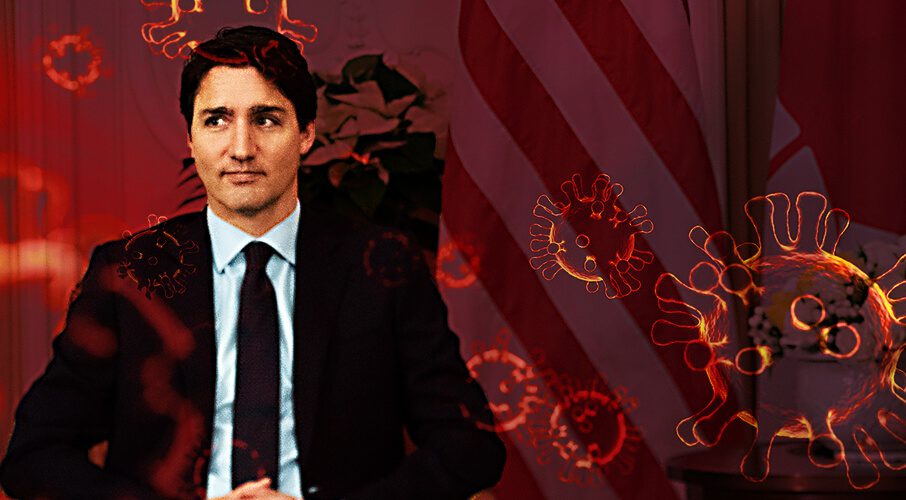 A unified, practical message in early February would have gone a long way to prepare the public. Instead, according to Shawn Whatley, Canadians were treated to a response that could have been ripped straight out of “Yes Prime Minister.”
A unified, practical message in early February would have gone a long way to prepare the public. Instead, according to Shawn Whatley, Canadians were treated to a response that could have been ripped straight out of “Yes Prime Minister.”
By Shawn Whatley, March 18, 2020
The federal government can’t win with the CCP (Chinese Communist Party) virus*, commonly known as the novel coronavirus. Canada is today where Italy was 10 days ago.
The feds have bungled a perfect opportunity to demonstrate the best reasons why people might like big government: a coordinated response, bulk purchasing of necessary items, unified messaging, and national unity.
For much of the crisis, Ottawa seems to have put all its focus on appearing calm and rational—so calm, in fact, that many of us have wondered whether our leaders were asleep at the switch.
What could have been done better?
The government could have coordinated a response to the CCP virus. That doesn’t mean martial law, but at least they could have put a little more energy into screening travellers returning from areas of high risk. It would have reassured the public and emphasized later messages about strict social isolation.
The first step in social isolation is to isolate ourselves from other countries. Using the government’s own language, it would have flattened the curve on public panic and a run on groceries. We would not have bare shelves at grocery stores.
All ministries of health should have been discussing resources. I thought the main argument for big, centralized governments was because they got such great deals on necessary things, which the provinces can’t get on their own. Things such as hospital beds and ventilators.
Some reports indicate that one in five infected patients over the age of 80 will need ventilator support in an intensive care unit. Even just the recovery from having been on a ventilator for a few days can be brutal—if you manage to survive. This means that we need many more ventilators and beds than we have now, although no one knows exactly how many.
There are only 1.4 acute beds per 1,000 population in Ontario, and an average of 2.58 beds per 1,000 across the whole country. Wuhan, ground zero of the virus outbreak in China, had 4.3 and needed to build two large emergency hospitals to house the hordes of infected patients. No wonder “flatten the curve” has been pushed so hard to avoid overloading the health-care system. We don’t need to just flatten the curve; we can’t handle the curve we have now.
A unified message would have helped. To be fair, the feds did have a somewhat unified message, similar to the four-stage approach in a time of crisis outlined in the BBC political satire sitcom “Yes Prime Minister”:
“In stage one we say, ‘Nothing’s going to happen.’ In stage two we say, ‘Something might happen, but we should do nothing about it.’ In stage three we say, ‘Maybe we should do something about it, but there is nothing we CAN do.’ And in stage four we say, ‘Maybe there’s something we could have done, but it’s too late now.’”
A unified, practical message in early February would have gone a long way to prepare the public. Give people direction. Offer ideas. Let them know that there are actions they can take now. National unity grows on finding common cause, on demonstrating that we can all play a part to fight something bigger than ourselves.
Instead, Canadians got a CBC version of the BBC four-stage approach.
When the dust from this pandemic settles, voters should approach their members of Parliament with some questions: When did you first hear about this? When did you put plans in place to make sure Canadians had enough hospital beds, ventilators, and other necessary medical equipment? Why did you not try to offer more active messaging in an attempt to “flatten the curve” on public panic as people rushed to stockpile and socially isolate?
It shouldn’t require individual citizens to raise the alarm on social media, chat groups, and in email chains to become aware of the risks. I first learned about damage by the new, aggressive Wuhan virus from The Epoch Times. Kudos to ET for doing what we pay the departments of health billions of dollars to do.
The spread of COVID-19 may slow down in the warmer months, as SARS and the Spanish flu did. However, the Spanish flu came roaring back the next fall.
We could reasonably be in for 12-18-months of turmoil. It will shape a new normal. Infectious disease experts have been warning of the next big pandemic, as well as multi-drug resistant bacteria, for years.
The federal government exists to protect the country from external threats. It exists for a time such as this. Let’s hope we make it through relatively unscathed.
Shawn Whatley is a physician, past president of the Ontario Medical Association, a blogger at ShawnWhatley.com, and a Munk Senior Fellow with the Macdonald-Laurier Institute. He is the author of “No More Lethal Waits,” a guide to reducing wait times and increasing efficiency in hospital emergency departments.
*This article was originally published in The Epoch Times, which refers to the novel coronavirus, which causes the disease COVID-19, as the CCP virus because the Chinese Communist Party’s coverup and mismanagement allowed the virus to spread throughout China and create a global pandemic.




